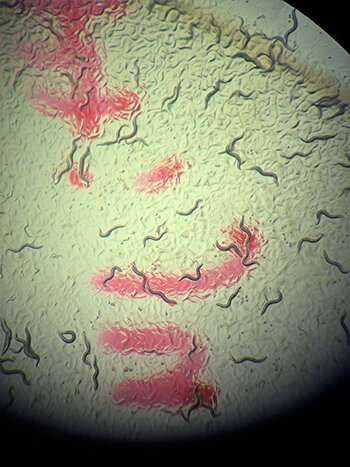Study: Opioid drug tolerance develops from interplay of key gene and cholesterol

UF Scripps Biomedical Research scientists have a discovered a key gene that is shedding light on how people develop tolerance to pain-relievers over time, a problem that raises risk of addiction and overdose.
The finding could open the door to a new generation of pain medications designed to function differently, and lower the chance patients could grow dependent on opioids and other drugs like morphine and fentanyl.
People who suffer severe pain from stroke, trauma or cancer know that over time, the most effective prescription pain relievers lose power, said UF Scripps neuroscientist Kirill Martemyanov, Ph.D. To provide patients with the same pain-relieving effect, doctors often must prescribe higher and higher doses.
To date, why this tolerance to opioids develops has not been clearly understood. The new study, led by Martemyanov and colleagues, shows a key role for a gene known as PTCHD1, which is involved in altering cholesterol content in a cell's membrane.
In addition to offering new directions for pain medication development, the discovery raises the possibility that cholesterol in the cell membrane may affect how people respond to other drugs, too.
Hundreds of receptors act as landing sites for medications and biological molecules on the surface of cells. Like a baseball catcher at home plate, mu opioid receptors specifically catch morphine or related drug molecules. When they do, systems within the cell responsible for pain relief, slowed breathing and even digestive changes become activated. Scientists call the group of landing sites GPCRs, short for G-protein coupled receptors. About one-third of all medications act on a GPCR, making them of great interest to scientists.
Finding a gene that drives tolerance to opioids by altering cholesterol in the cell membrane surprised the researchers. Martemyanov's co-author on the study was Brock Grill, Ph.D., previously of Scripps Research, now of Seattle Children's Research Institute and the University of Washington Medical School.
"There are more than 800 known G-protein coupled receptors, and regulation of cholesterol by genes in this family could be important to understanding many of them," said Martemyanov, who chairs the UF Scripps Department of Neuroscience.
Understanding how cholesterol may drive tolerance is an important advance in the quest to find a new generation of pain medications less prone to causing overdose, he added.
In their quest to better understand opioid tolerance, the scientists chose to conduct an "unbiased" genetic screen working with a type of tiny worm called C. elegans. Unbiased genetic screens allow the organism's biology to reveal what's happening, without preconceived ideas of specific genes that might be involved. Researchers often use simpler animal models like worms for this purpose. The work was conducted in Grill's laboratory during his tenure at Scripps Research, Florida, which is now UF Scripps Biomedical Resarch.
They started by altering the genome of C. elegans worms to add the mammalian mu opioid receptor, to make the worms responsive to pain-relieving drugs. Treating them with fentanyl and morphine left the genetically altered worms paralyzed at first, but that effect diminished with repeated exposure, as the worms developed tolerance.
The genetically altered worms were then subjected to random genetic changes, silencing various genes. Those that stopped showing tolerance were selected for further testing to see what made them different. One gene that encoded a membrane protein stood out. The closest mammalian version of this gene was PTCHD1.
Researching what was known about the gene in humans, the team found it was implicated in neuropsychiatric conditions, but little was known about how it functioned in cells. The researchers next tested mice engineered to lack PTCHD1 to see if the effect was similar in mammals. Mice without the gene not only failed to develop tolerance with repeated exposure to opioids, they also showed reduced symptoms of withdrawal when treatment ceased.
PTCHD1 belongs to a family of genes known to be involved in regulating cholesterol accumulation in cell membranes. For that reason, the scientists investigated whether cholesterol was involved in tolerance. Indeed, the researchers found that overexpression of PTCHD1 significantly reduced the cholesterol content of the cell membranes.
So this raised a new and important question: Could enriching cholesterol in the cell membrane be a strategy for reducing opioid tolerance? To answer that question, they looked to known medications. A series of experiments led the team to simvastatin, a commonly prescribed cholesterol-lowering drug that also increases the high-density lipoprotein, or HDL, part of cholesterol. Mice treated with simvastatin showed lack of tolerance to repeated opioid challenges.
The scientists suspect cholesterol affects the cell receptors by either binding directly to them, or by indirectly controlling cellular activities downstream. More work lies ahead. The scientists suspect that other genes in this family may be involved in regulating cell receptors such as the mu opioid receptor.
The research was published in Nature Neuroscience.
More information: Brock Grill, Ptchd1 mediates opioid tolerance via cholesterol-dependent effects on μ-opioid receptor trafficking, Nature Neuroscience (2022). DOI: 10.1038/s41593-022-01135-0. www.nature.com/articles/s41593-022-01135-0

















